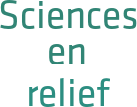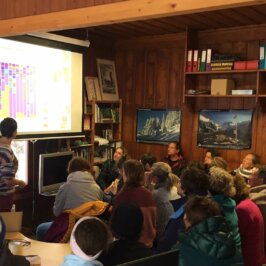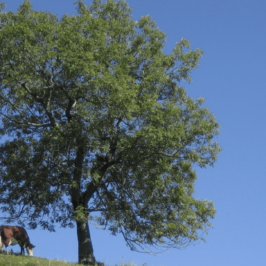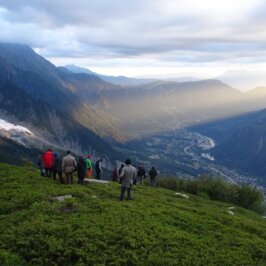CREA Mont-Blanc leads and analyzes several citizen science programs, including Phénoclim and Wild Mont-Blanc. Faced with the multiplicity of programs that we propose or that we wish to launch, we decided to create a single digital interface that will be online in spring 2023. This article describes our collaboration process in which we had participants, students, mountain professionals, environmental educators, researchers and other experts.

A history of Citizen Science at CREA Mont-Blanc
Citizen Science has been part of CREA Mont-Blanc DNA since its creation in 1996. The concept of citizen science was only formalized in the mid-1990s, in parallel by two researchers: Alan Irwin and Rick Bonney. This concept encompasses a wide range of activities in which people from civil society can participate. Through observation, alone or accompanied, in a scientific project carried out with one or more structures. Our link with this practice of citizen science is old: Anne Delestrade, founder of the association, invited the inhabitants of the Chamonix valley to share their observations of ringed alpine choughs as early as 1988. This program is still in progress and is one of the longest monitoring of animal populations in the mountains. Citizen contribution to science is not a recent practice since until the end of the 19th century scientists were amateurs (think of Charles Darwin or Benjamin Franklin).
The most emblematic and geographically extended program of the CREA Mont-Blanc is Phénoclim. Since 2004, our team, with the support of numerous partners, has concentrated its efforts on this program, and the contribution of Phénoclim to research is no longer to be demonstrated (5 scientific articles and 1 thesis already published). Several citizen science actions anchored in the Mont-Blanc massif were launched (amphibian observation, vegetation measurements, collection of droppings and feathers, punctual observations of animals and plant phenology etc…) and even more widely like Wild Mont-Blanc.
Our challenge now is to present the diversity of these programs and offer a different approach to citizens and tourists.
A collaborative approach
In September 2021, CREA Mont-Blanc set up a working group with researchers (sociologists, ecologists, ecopsychologists) and practitioners (digital, collective intelligence, tourism, education, community management). These workshops allowed us to question how to interest new audiences in our programs, to get them to participate in more actions, to make them want to invest in the long term. Furhtermore, we conducted an in-depth reflection on the role of citizen science in the challenges of (re)connecting to the living world.
We then collaborated with two higher education institutions in France. Students in tourism made proposals for tourism products integrating citizen science. And students from design and digital technology embodied these work tracks in the form of physical and digital objects. Furthermore, we conducted surveys with all the current participants in Phénoclim, but also more widely with potential participants. The objective of these surveys was to know their ideas, experiences, expectations, obstacles to ensure that the proposed approach was in line with their expectations.
Thanks to this collaborative process, we have defined the outlines of a future platform that meets both the scientific objectives of CREA Mont-Blanc, but also the expectations of participants.
The website will be translated in English so you’ll be welcome to participate. You will then contribute with the community to the evolution of animals, plants and ecosystems. Stay tuned ! We’ll keep you posted with the launch of the platform next spring!







Leave a Reply